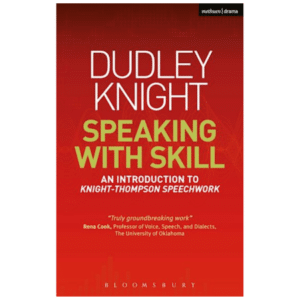The Power of Dialects and Accents in Voice Acting: Mastering Versatility
By: WhisperRoom™
December 29, 2023


Imagine the captivating world of cinema, where a single accent can transform an ordinary character into an unforgettable icon. Recall Meryl Streep’s masterful Polish accent in “Sophie’s Choice,” or the way Andy Serkis brought Gollum to life in “The Lord of the Rings” trilogy with a voice that was as unique as the character itself.
These examples underscore the profound impact that skillfully executed dialects and accents can have in the realm of acting. In voice acting, this impact is magnified, as the voice becomes the sole conveyor of the character’s identity and essence.
Mastering a variety of dialects and accents is akin to a musician fine-tuning their instrument. Each new style played adds depth and versatility to their repertoire. For voice actors, this mastery is not just an artistic endeavor; it’s a strategic career move. The ability to switch seamlessly between a sultry Southern drawl, a crisp British accent, or an authentic-sounding French lilt can open doors to diverse roles, spanning from animated films to video game characters, and everything in between.
In a recording booth, where every nuance and inflection is captured, the right accent can transform a performance from ordinary to extraordinary. It’s what distinguishes a memorable character from a forgettable one, resonating with audiences long after the story ends.
Your accent, whether for a gritty detective or a whimsical character, is a powerful tool in voice acting. It not only defines the character but also sets the tone and atmosphere of the entire narrative.
Mastering dialects and accents in voice acting is essential for achieving distinctiveness and range.
As we delve deeper into the art of mastering dialects and accents, remember that each voice you develop is a testament to your versatility and commitment to your craft. It’s about authentic characters and deep audience connections, helping you stand out in a sea of voices.
To truly grasp this concept in voice acting, one must first understand the subtle yet significant differences between a dialect and an accent.

A dialect is not just a variation in pronunciation; it encompasses the unique vocabulary, grammar, and pronunciation specific to a region or group.
It’s the linguistic fingerprint of a community, shaped by cultural, geographical, and social factors.
Adopting a dialect means embodying someone’s life, complete with its unique nuances and idiosyncrasies.
On the other hand, an accent is a distinctive way of pronouncing a language, particularly one associated with a country, area, or social class. It’s less about the words you choose and more about how you say them. Accents are the melody of speech the unique musicality that differentiates a native New Yorker from a Londoner, even if they’re speaking the same language.
The key to mastering accents lies in the realm of phonetics, the study of the sounds of human speech. Phonetics dissects the intricacies of speech sounds, providing a roadmap for voice actors to navigate new accents. Three fundamental elements form the cornerstone of any accent: intonation, rhythm, and stress patterns.
Intonation is the rise and fall of voice in speaking. It’s the difference between a question sounding inquisitive and a statement sounding assertive. Rhythm, on the other hand, is the pattern of sounds and silences in speech, the tempo at which words are spoken. It’s what makes the rapid-fire delivery of a New Yorker distinctly different from the more measured pace of a Southerner. Lastly, stress patterns – the emphasis placed on certain syllables within words and sentences – play a crucial role.
For a voice actor, this knowledge is power – the power to transform your voice into a versatile instrument capable of accurately and authentically representing diverse characters and cultures.
For voice actors, the path to accent acquisition is both thrilling and challenging. A practical starting point is to begin with accents that share similarities to your native dialect. This approach allows for a smoother transition, leveraging your existing linguistic framework to build confidence as you branch out into more diverse and complex accents.
Just as a sculptor needs to understand their medium, a voice actor must become intimately familiar with the nuances of the accent they wish to master. This immersion can be achieved through a variety of methods. One effective approach is to mimic accents in films, television shows, and theater performances. Pay close attention not just to the sounds, but also to the rhythm, intonation, and emotional undertones carried by the accent.
Accent training websites and software can also be useful resources, offering structured lessons and exercises tailored to specific accents. These tools often provide detailed breakdowns of phonetic components, making it easier to understand and replicate the sounds accurately.
However, the true essence of mastering an accent lies in consistent practice. Regular, dedicated practice sessions are crucial. This is not just about repeating sounds, but about speaking with the accent in different contexts – from reading aloud to normal conversation. This kind of practice helps internalize the accent, making it a natural part of the vocal repertoire.
Recording oneself is another vital aspect of the learning process. Often, what we perceive in our heads differs from what others hear. By recording and listening to your attempts, you can objectively assess your accent imitation. This self-evaluation allows you to identify areas of strength and those needing improvement. It’s a feedback loop that accelerates your learning and hones your skills.
Remember, acquiring a new accent is not just about altering your speech. It’s about embracing and understanding a new culture and way of expression. Each accent carries with it a history, a set of experiences, and emotional depth. As a voice actor, your goal is to capture not just the sound of the accent, but its soul.
Mastering an accent is a delicate balance between authenticity and performance. In this intricate dance, even seasoned voice actors can stumble, often falling prey to common pitfalls. One of the most frequent mistakes is over-exaggerating.
In an earnest attempt to sound authentic, actors sometimes push the accent too far, resulting in a caricature rather than a character. This overreach not only detracts from the performance but can also inadvertently offend or misrepresent the people and culture associated with the accent.
Another challenge lies in the realm of stereotypes. Relying on cliched or outdated perceptions of how an accent should sound can lead to performances that are at best unconvincing and at worst, culturally insensitive. Accents are not static; they evolve and vary widely even within the same geographical area. What might be a common intonation in one part of London, for instance, could be entirely different in another.
Studying native speakers is invaluable. This doesn’t just mean listening to them but observing the nuances of their speech in different contexts – casual conversation, emotional dialogue, formal speech, and so on. The goal is to understand the accent in its natural habitat, rather than just its exaggerated form often portrayed in media.
Feedback is equally crucial. Working with a dialect coach can provide professional guidance and help you navigate the subtleties of the accent. If a dialect coach isn’t accessible, seeking feedback from native speakers can be incredibly beneficial. They can offer insights that you might have overlooked and help you fine-tune your performance to achieve a level of authenticity that resonates with listeners.
Remember, the objective is not just to mimic an accent but to inhabit it. This requires a blend of technical skills, cultural understanding, and emotional empathy. By avoiding over-exaggeration and stereotypes, and seeking informed feedback, you can improve your accent performance from mere imitation to a genuine and respectful portrayal.
In the quest to master dialects and accents in voice acting, an array of resources is available to voice actors. These tools range from websites and online courses to specialized books and apps, each offering unique approaches to accent training. Additionally, workshops and coaching services provide personalized guidance, helping actors refine their skills under expert supervision. Here, we compile a list of the most valuable resources available to assist you in your accent and dialect journey.


Each of these resources offers a unique approach to learning and mastering accents and dialects. While books and guides provide the theoretical foundation, websites, apps, and workshops offer practical, hands-on experience. The key is to find the combination of resources that best suits your learning style and needs.
When delving into dialects and accents in voice acting, voice actors must tread with both skill and sensitivity. The act of adopting an accent is not merely a technical challenge; it carries the weight of cultural representation. When you speak in an accent not your own, you are, in a sense, stepping into the shoes of another culture or ethnicity. This responsibility should be approached with the utmost respect and mindfulness.

The importance of cultural sensitivity cannot be overstated. Accents are more than just sounds; they are deeply intertwined with cultural identities and histories. An uninformed or careless portrayal can inadvertently perpetuate stereotypes, offend, or misrepresent the people behind the accent. As voice actors, it’s crucial to remember that your performance has the power to influence perceptions and reinforce narratives about different cultures and communities.
To approach accents with the respect they deserve, thorough research and understanding are essential. This goes beyond just mastering the sound of the accent. It involves an appreciation of the context from which it originates.
Learn more about the culture, the people, and their history. Understand the nuances and variations within the accent, as no two speakers are exactly alike. This depth of knowledge not only enriches your performance but also ensures that it is grounded in authenticity and respect.
Do Your Research: Invest time in understanding the background and nuances of the accent. This includes its geographical origins, cultural significance, and contemporary usage.
Seek Authentic Sources: Learn from native speakers and dialect coaches who can provide insights into the accent’s subtleties and variations.
Avoid Stereotyping: Steer clear of broad generalizations and caricatures. Focus on creating a character that is individual and nuanced, not a collection of exaggerated traits.
Be Open to Feedback: Be willing to listen to and learn from feedback, especially from members of the culture you are representing. Their insights can help you create an accurate and respectful portrayal.
Practice Cultural Empathy: Strive to understand and appreciate the culture associated with the accent. This empathy will inform your performance and help you avoid disrespectful or insensitive portrayals.
By following these principles, voice actors can navigate the complex and rewarding world of accents with both professionalism and ethical integrity.
As we draw our exploration of dialects and accents in voice acting to a close, it’s clear that these elements are far more than mere tools of the trade. They are the vibrant colors with which voice actors paint their characters, bringing authenticity and diversity to the canvas of storytelling. Mastering various accents and dialects showcases an actor’s versatility and celebrates the richness of language and culture.
The journey of mastering accents is an ongoing process, one that challenges and enriches a voice actor’s craft. It’s a path that demands dedication, curiosity, and respect. As you embark on this journey, remember that each new accent you learn opens a window into a different world. It’s an opportunity to connect with and understand the subtleties of various cultures and communities, deepening your appreciation for the nuances that make each language unique.
Learn with an open mind. Let your pursuit of accent mastery be guided not just by the desire to expand your skill set, but also by a genuine interest in the stories and experiences behind these voices.
The mastery of dialects and accents in voice acting is more than just an impressive display of vocal agility. It’s a powerful means of storytelling, a way to give voice to the voiceless and to bring life to characters that might otherwise remain unheard. As voice actors, you have the unique privilege and responsibility of bringing these diverse voices to the forefront.
So, continue to hone your craft, explore new accents, and cherish the journey. The voices you create today are the echoes that will resonate in the hearts and minds of your audience, leaving a lasting impact that transcends the boundaries of language and culture.
Don’t forget to share this post!

